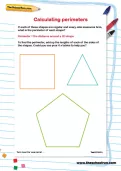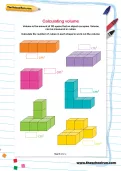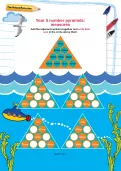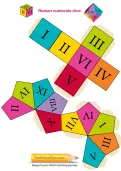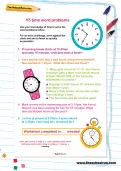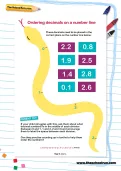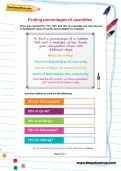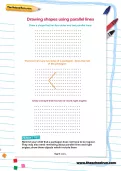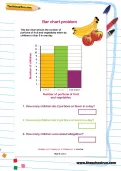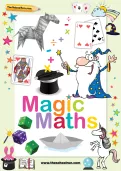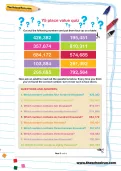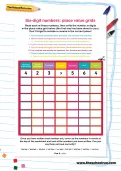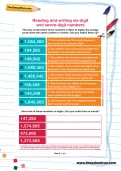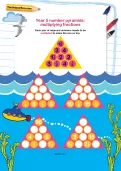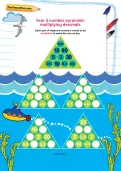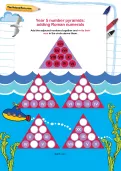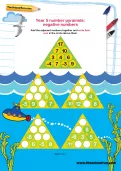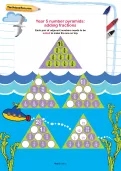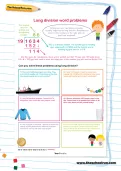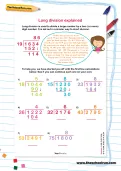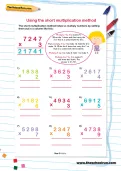Use these free Roman numerals dice (six-sided and ten-sided) to help your child learn to recognise Roman numerals and practise using them in games.
or
Register to add to your saved resources
With Christmas lists to write, present-delivery schedules to work out, Grotto problems to solve and light and dark experiments to try this bumper pack of festive learning activities will keep your child engaged over the Christmas break.
or
Register to add to your saved resources
Already a subscriber? to view this content.
Use your knowledge of time to solve these word problems. For an extra challenge, work against the clock and aim to finish as quickly as possible!
or
Register to add to your saved resources
Already a subscriber? to view this content.
Can you place these decimals in the correct place on the number line?
or
Register to add to your saved resources
Already a subscriber? to view this content.
Once you can find 5%, 10%, 50% and 75% of a quantity you can move on to finding the value of harder percentages! Use this method to work out the answers to these tricky percentage questions.
or
Register to add to your saved resources
Already a subscriber? to view this content.
Can you draw a shape that has four sides and two parallel lines? What about a pentagon? What about a shape with two or more right angles?
or
Register to add to your saved resources
Already a subscriber? to view this content.
Look at this bar chart, which shows the number of portions of fruit and vegetables eaten by children in Year 5 in one day, and see if you can answer the questions below.
or
Register to add to your saved resources
Already a subscriber? to view this content.
Are you ready to unleash your maths superpowers? Our number tricks will help you develop X-Ray vision, read minds, memorise hundreds of numbers and more. Add, subtract, multiply, divide and... abracadabra!
or
Register to add to your saved resources
Already a subscriber? to view this content.
Cut out the following numbers and put them face up on a table. Now ask an adult to read out the questions below. Every time you think you’ve found the correct number, turn it over so it is face down.
or
Register to add to your saved resources
Already a subscriber? to view this content.
Read each of these numbers, then write the number in digits in the place value grid. Don’t forget to include a comma in the correct place!
or
Register to add to your saved resources
Already a subscriber? to view this content.
The blue cards show numbers written in digits; the orange cards show the same numbers in words. Can you match them up?
or
Register to add to your saved resources
Already a subscriber? to view this content.
Each pair of adjacent numbers needs to be multiplied to make the one on top.
or
Register to add to your saved resources
Already a subscriber? to view this content.
Each pair of adjacent numbers needs to be multiplied to make the one on top.
or
Register to add to your saved resources
Already a subscriber? to view this content.
Add the adjacent numbers together and write their sum in the circle above them.
or
Register to add to your saved resources
Already a subscriber? to view this content.
Add the adjacent numbers together and write their sum in the circle above them.
or
Register to add to your saved resources
Already a subscriber? to view this content.
Add the adjacent numbers together and write their sum in the circle above them.
or
Register to add to your saved resources
Each pair of adjacent numbers needs to be added to make the one on top.
or
Register to add to your saved resources
Already a subscriber? to view this content.
Setting out your calculation correctly is really important in long division. Remember to write all the numbers in the right place or you’ll get confused! Can you solve these problems using long division?
or
Register to add to your saved resources
Already a subscriber? to view this content.
Long division is used to divide a large number by a two- (or more) digit number. It is set out in a similar way to short division. We've started off some calculations. Can you can continue each one on your own?
or
Register to add to your saved resources
Can you use the short multiplication method to solve these problems?
or
Register to add to your saved resources
Already a subscriber? to view this content.
